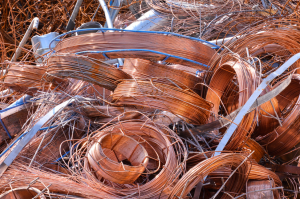23 Jul Where Does it All Go? An Explanation of the Chicago Metal Recycling Process
 Perhaps you’ve recently submitted some of your metal items to a Chicago metal recycling facility. Hopefully you were compensated for your submission, and are happy to have a little cash in your pocket. Now you might be wondering to yourself, “where is all that metal going to go?”
Perhaps you’ve recently submitted some of your metal items to a Chicago metal recycling facility. Hopefully you were compensated for your submission, and are happy to have a little cash in your pocket. Now you might be wondering to yourself, “where is all that metal going to go?”
Each and every piece of metal submitted to a metal recycling facility is put through a long, but effective recycling process. Wondering what this process entails? Read on to find out.
Step 1: Metals are Collected
The first step in the Chicago metal recycling process is the submission and collection of metals. During this step, businesses and individuals bring their metals to their local recycling facilities. Once in these facilities, their metals are assessed and weighed.
Assessment and weighing is performed to determine the monetary value of the metals submitted. Once a monetary value is determined, that amount of money will be paid to the person or business that submitted the metals.
All types of scrap metals can be recycled in Chicago, including (but not limited to) stainless steel, copper, brass, and e-scrap.
Step 2: Scrap Metals are Sorted
After a Chicago scrap metal recycling facility has accepted some metals, they will be sorted into like groups. For instance, aluminum items will be placed with other aluminum items, and copper items will be placed with other copper items.
This is done in order to maintain the purity of the submitted metals. Mixing two different types of metals together will create an entirely new alloy — one that will probably not be effective in any meaningful way.
Step 3: Metals are Processed
Once metals have been sorted into uniform groups, they are processed, or shredded. This is done by throwing the metals into large shredding machines, which results in shredded scrap.
Why are metals shredded? This is done with the intention of separating metals from non-metals, and also to separate the various metals by type.
Step 4: Metals are Melted
As was just alluded to, melting is a step in the recycling process. It is during this step that shredded metals are placed into a furnace and heated to extreme temperatures. This causes them to melt down to a liquid, making them easy to shape and manipulate.
Different metals melt at different temperatures and different speeds. Whereas some metals will take only a few minutes to melt, others will take hours.
Step 5: Metals are Purified
After metals have been melted, they will be checked for impurities. If any impurities exist within a batch of melted metal, that metal could have complications when re-hardened.
Metals can be inspected for impurities in a variety of different ways. However, one of the most common methods of inspection is electrolysis.
Step 6: Metals are Reshaped
Once the melted metal has been inspected and cleared of impurities, it is time for it to be reshaped and made into new metal products. This is done with the use of molds. Metals can be shaped into a wide variety of items, from auto components, to soda cans, to cutlery, and much, much more.
After metals have been reshaped into new items, the metal recycling process will be complete. The items made out of your recycled metals will be used to serve a wide variety of functions, ultimately benefiting both the environment and the economy.
Recycle Scrap Metal in Chicago
Do you have scrap metal items that you’re looking to put through the recycling process? Looking to recycle scrap metal in Chicago, specifically? If so, the recycling specialists with Central Metal Recycling are the people to see.
We accept most metal items brought to our facility, including stainless steel, iron, and aluminum items, to name just a few.
Contact us today to discuss your metal recycling needs!


No Comments